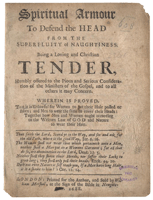How Gay Rights Advocates use Head Covering to Support their Position
The head covering passage (1 Corinthians 11:2-16) is a battleground for one of the most important issues of our day. Those who advocate for the normality of same-sex relationships by appealing to the Bible, use this passage to garner support for their position. As Christians we must understand their argument and get consistent in our theology if we are going to faithfully defend biblical sexuality.
This video is based on a section of an article we wrote here.
- Share
- Like
- Tweet
- Pin It
- Digg
- Delicious
- Tumblr
- VKontakte
- Flattr
- Buffer
- Love This
- Odnoklassniki
- Meneame
- Blogger
- Amazon
- Yahoo Mail
- Gmail
- AOL
- Newsvine
- HackerNews
- Evernote
- MySpace
- Mail.ru
- Viadeo
- Line
- Comments
- Yummly
- SMS
- Viber
- Telegram
- Subscribe
- Skype
- Facebook Messenger
- Kakao
- LiveJournal
- Yammer
- Edgar
- Fintel
- Mix
- Instapaper
- Copy Link





